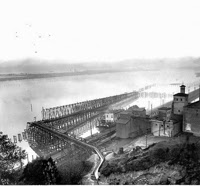Just a light thought process for the big game. Candy for the fans and maybe a bit of help for those non fans caught up in the cultural experience.
Noise
The late 1970s were glory years for Seattle major league sports; the city had a new NFL football team and a new MLB baseball team. They played their games in the King Dome, a concrete domed stadium the color of the Seattle winter sky. The reason for the dome was the weather. Extended wet and cool weather was bad for baseball and the idea was Seattle needed a domed stadium. I went to a few games there, it was truly terrible stadium. Nothing worse than being in a gray room with no windows when it was sunny outside.
However, for football there was an advantage. A concrete dome stadium was very very loud. The 1980s brought some success to the Seahawks. They were scrappy and had one season where they beat the Oakland Raiders twice and met the Raiders again in the playoffs but lost and the Raiders went on to win the Super Bowl. It was during this period that Seattle developed a reputation for being a very very loud place to play. Teams would come in to play Seattle, and if not prepared could not call any plays different than what was planned, could not hear the snap count and even had trouble calling plays in the huddle.
When new ownership that likely prevented the Seahawks from leaving (as well as some tax breaks passed by the State) and a new stadium was to be built, the idea was to build a football stadium that could still be loud even if it was no longer enclosed with echoing concrete walls. In that the designers were successful. And the fans have embraced the idea - showing a rather unexpected manic side to the Seattle personality.
Psychology
The noise is a definite factor in Seattle's home field advantage. But there are some others. Teams generally do better at home for a variety of reasons that has to be in part psychological. So any sports team will have some psychological advantage playing at home, but the concept of the fans being the 12th Man on the team enhances that factor. It certainly does bring out the noise level. The fans have a job as the 12th man on the team. They can't play the game out on the field so they do the one thing they can, cheer as loud as possible. Its their job. So the 12th man on the team is working very hard at being loud and doing a great job and to the other 11 members of the team it is obvious that their 12th team mate is doing their absolute best - so those 11 will do their best - you do not want to let your team mate down, particularly when they are working so hard.
Distance
Another factor is travel distance. Seattle is the most isolated NFL city. It is a long trip for other teams to come to Seattle. San Francisco and Oakland are is the closest at roughly 800 miles. For east coast teams with mostly short road trips, the trip to Seattle is a long haul. In addition to the distance, teams also have to deal with time zone issues. Physically it will have some impact. There is a down side in that it means Seattle has to always travel a long distance. And until about mid last season, Seattle had a reputation of doing very poorly while traveling.
Weather
A common statement made by Seattle Seahawk and UW Husky fans before big games "I hope it rains".
Other stadiums have reputations for bad weather due to their northern climate. Cold and wind present problems for teams. But being a bit of climate geek, it should be pointed out that for teams coming to Seattle, the odds are high that they will be experiencing bad weather that they are not used to, particularly early in the season. Seattle cools down early in the fall and cold rains can arrive in early October. We get used to that weather fast, but its a bit of a shock for teams coming from areas where chilly wet weather has not arrived. In the early part of the season this is a big advantage for Seattle, but diminishes later in the season. That said, New Orleans, a southern team that plays indoors could not have been comfortable in the low 40s, wind and rain last week.
How Will Home Field Advantage Add Up
The San Francisco 49ers will know what to expect as they have played in Seattle every year. It will not be a new experience. However, the last two times the San Francisco 49ers came to Seattle things went rather poorly for the 49ers. Travel distance is less of a factor for SF than any other team - they the closest team to Seattle, are in the same time zone, and the travel distance to Seattle is less than most of their other road trips. It does not appear that the weather will be a big deal as rain seems unlikely, and the 49ers managed to get through the first play off game by beating Green Bay in 5 degree weather.
So it will come down to noise and psychology. As I noted SF has experience. They know what to expect. In that perhaps there is an edge though for Seattle. The last two trips to Seattle have been disasters for the 49ers. That issue will be nagging at them, maybe even irritating them. Maybe they are thinking about too much.
But then again, the game might come down to talent, the bounce of a ball or the vision of a referee.















.jpg)




























